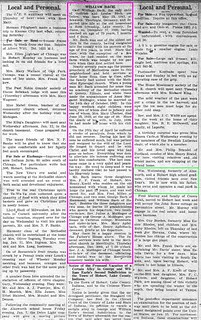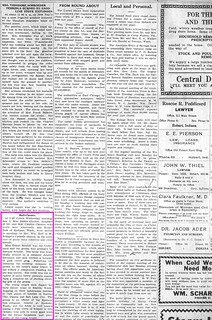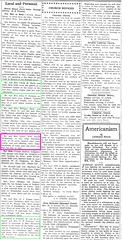
(Click on images to enlarge)
It took me a long time to figure out where the Bach homestead was. You'd think people who had been here since 1846 would have acquired more land than this: [12/1/13 update: They did. The DeWell family archivist points out that I missed a second 40-acre Bach parcel, outlined in green on the map below. Now I don't know which parcel to get all sentimental over. And I can't figure out which road the green parcel sits on — W. 86th? W. 89th?]

The daughter, Mrs. Henry Kuehl, mentioned in the obituary as living with him was the former Henrietta "Hattie" Bach. She had married Henry Kuehl in 1896 and left the old homestead for a few years, but by 1910 she and Henry had come back. In the intervening years, her brother, George, and his wife and children had lived with their father. So as far as I know Carl William Bach was never alone there.
Sources:
♦ 1900 Census.
♦ 1908 Plat Map.
♦ 1910 Census.
♦ 1920 Census.
♦ Indiana Marriage Collection.
♦ "Local and Personal." Hobart News 6 Jan. 1921.
♦ "Obituary." Hobart Gazette 7 Jan. 1921.
♦ "William Bach." Hobart News 6 Jan. 1921.




























